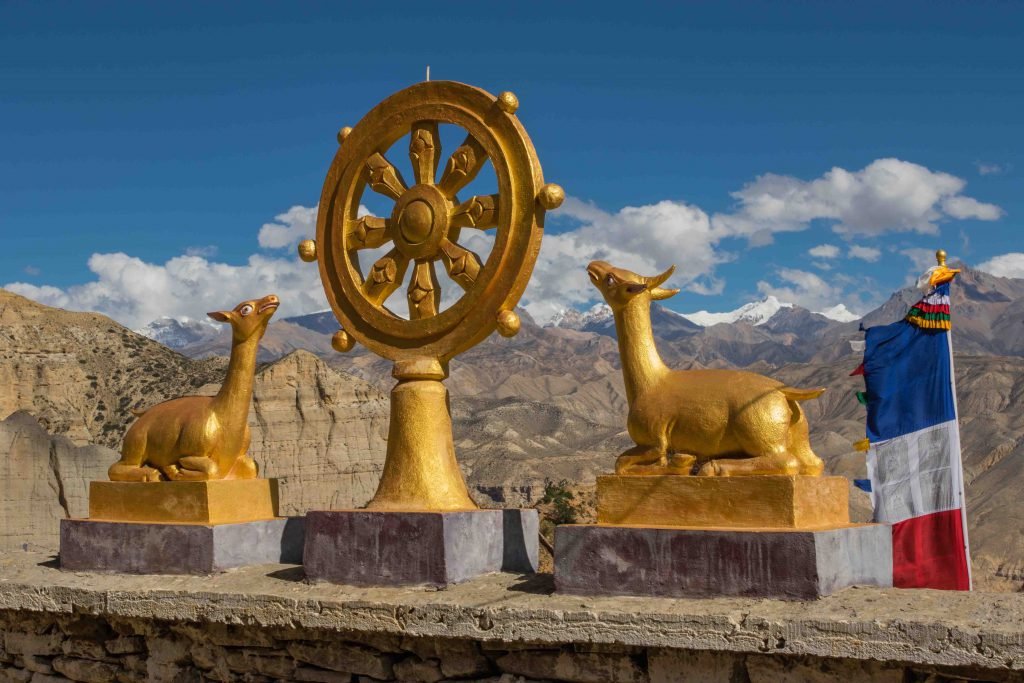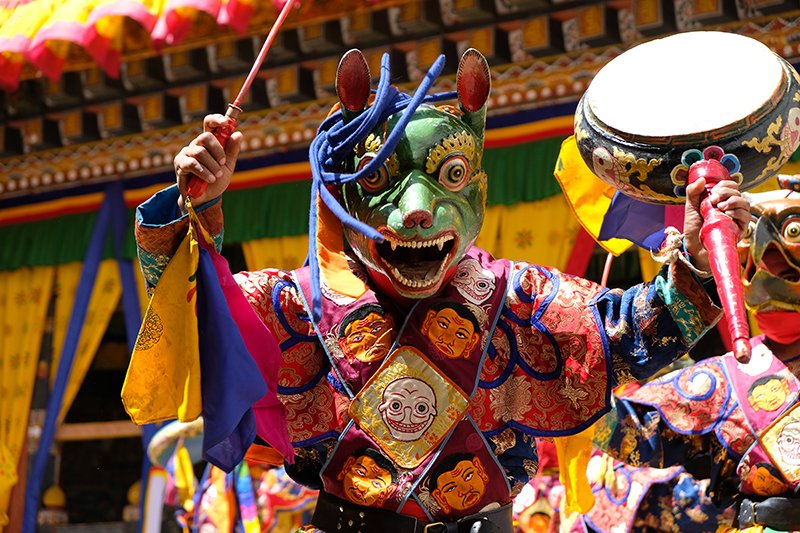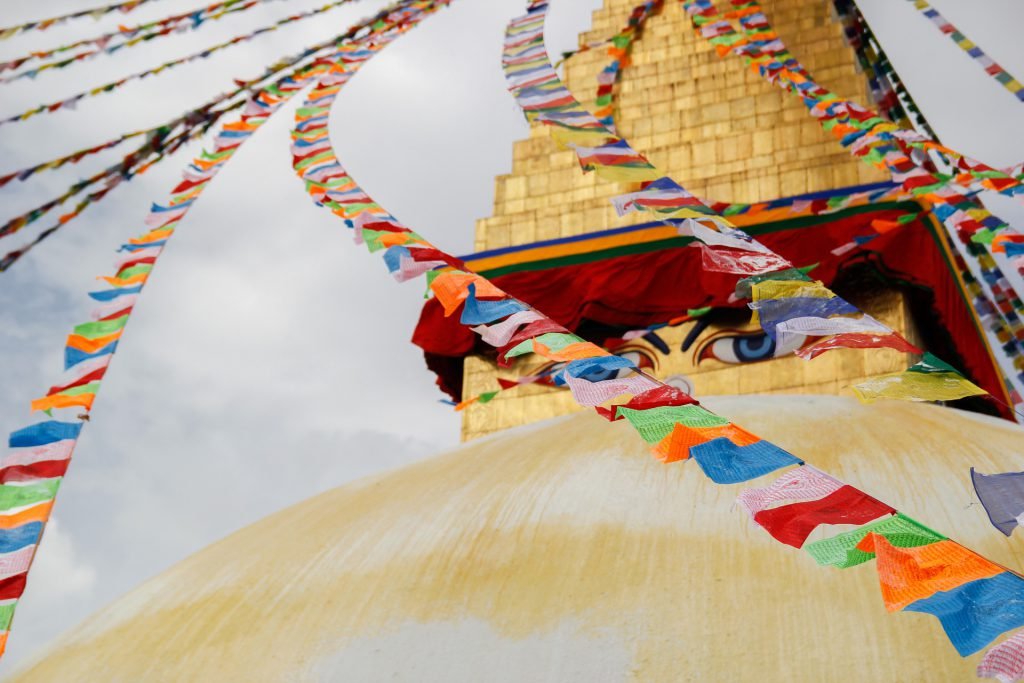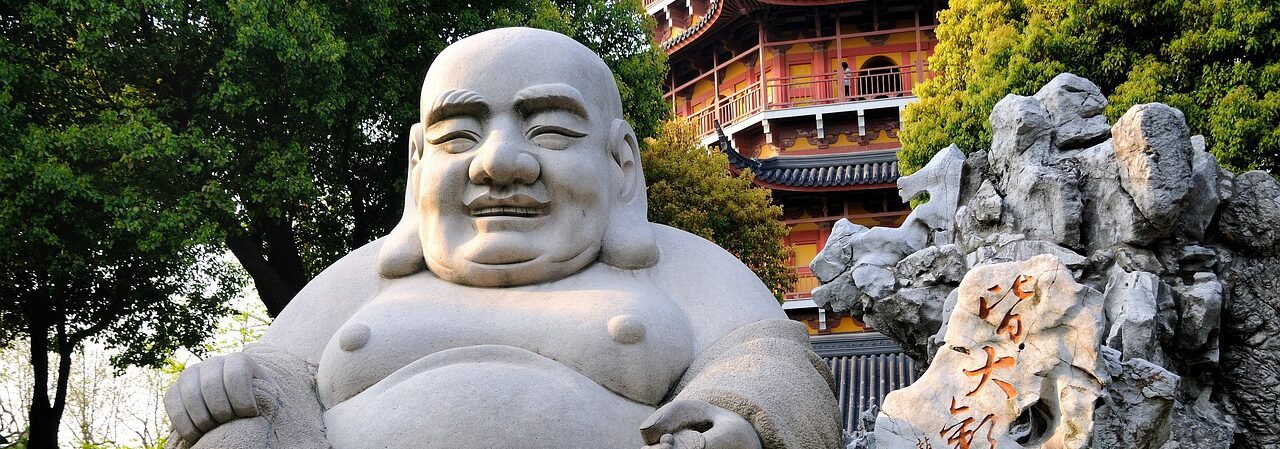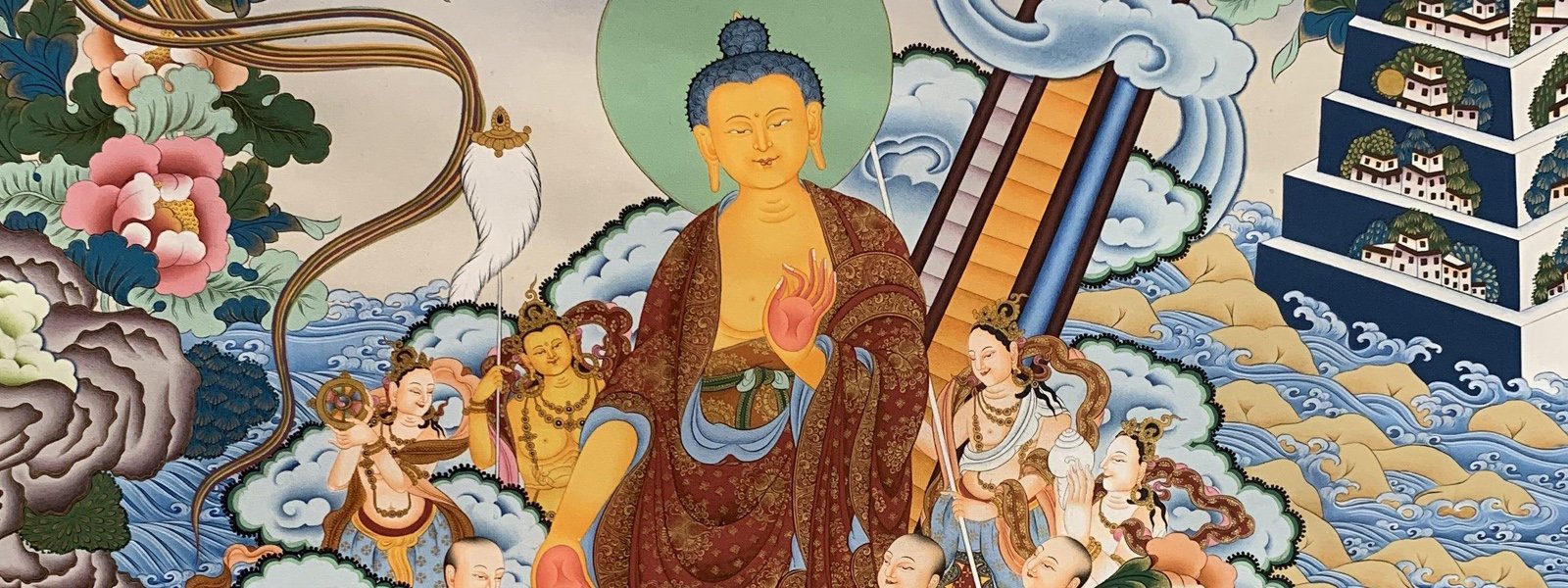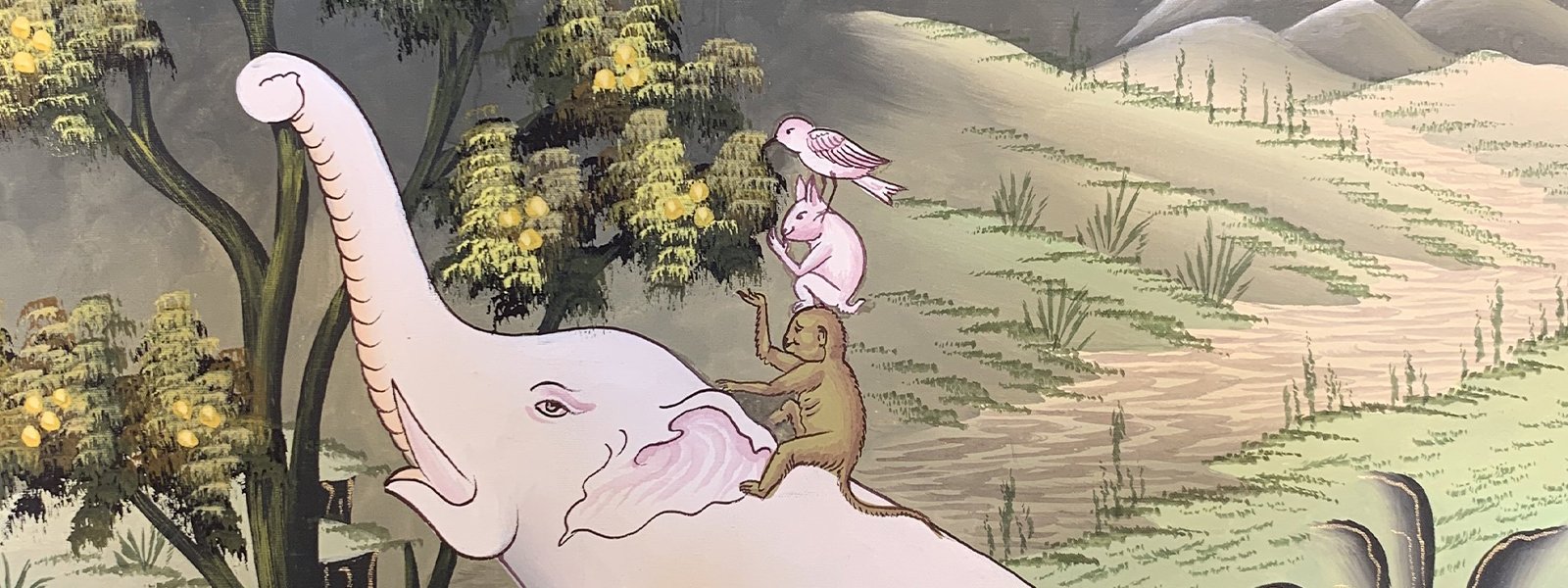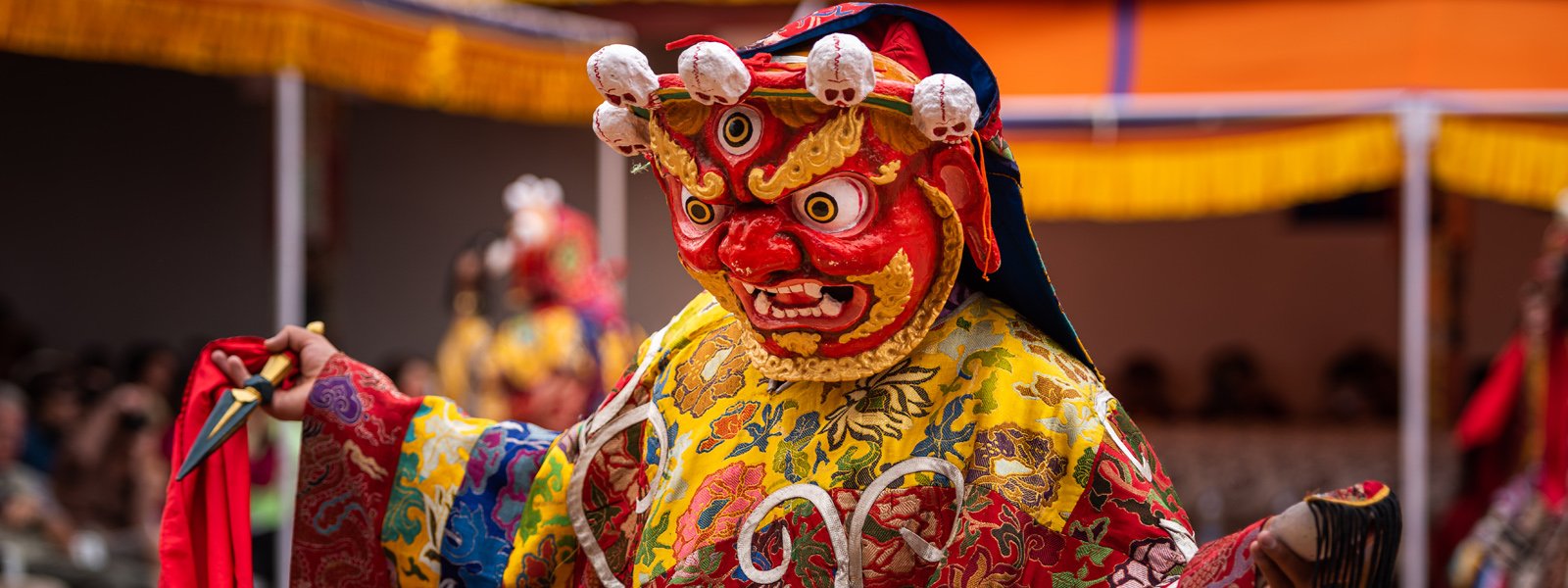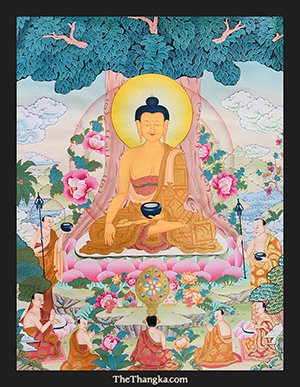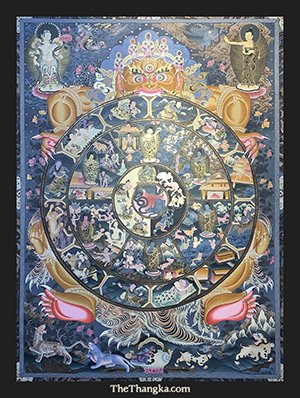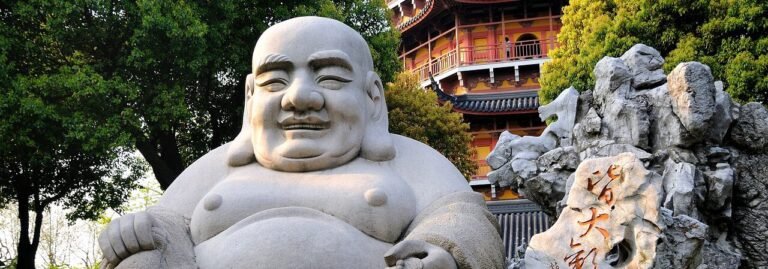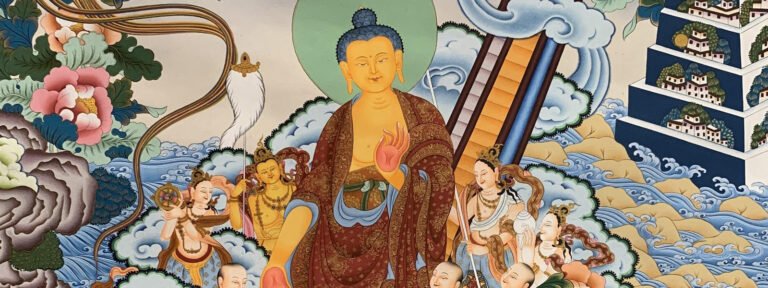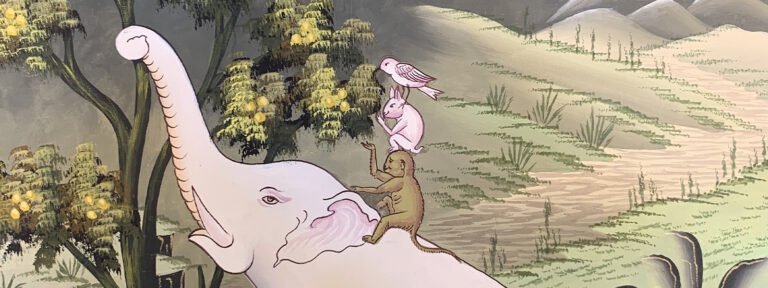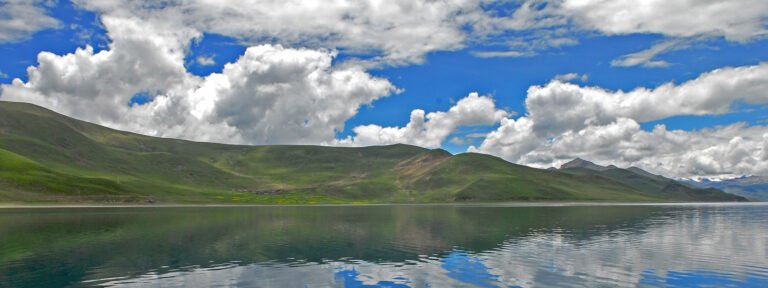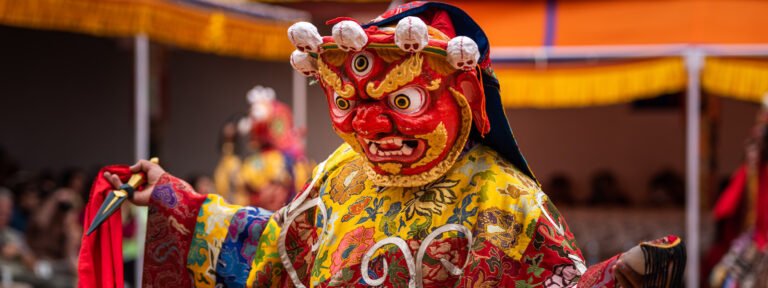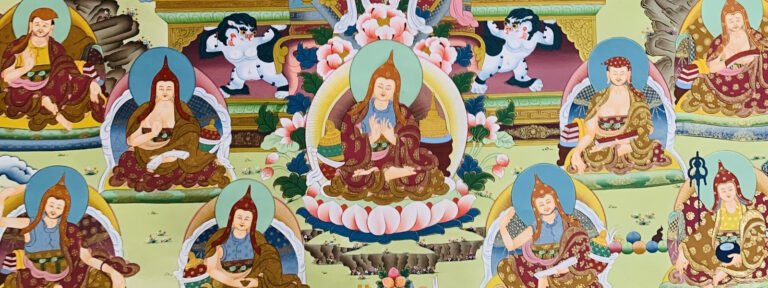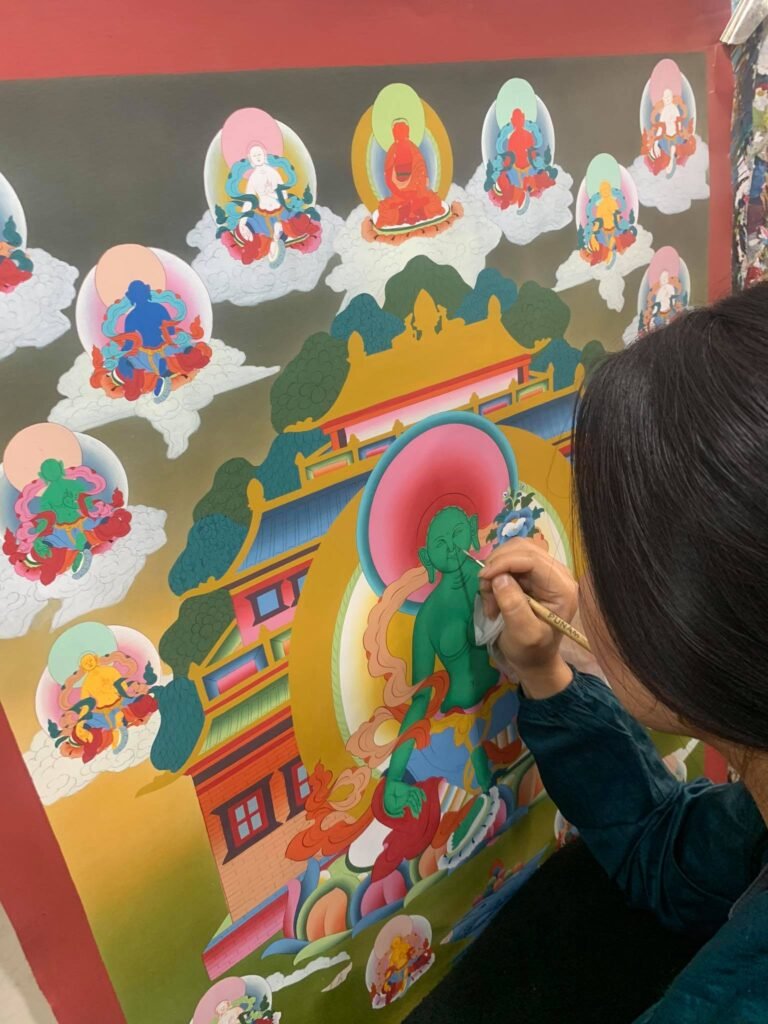The Tibetan creation myth is a beautiful story about how humanity came to be through the union of a monkey (Pha Trelgen Changchup Sempa ཕ་སྤྲེལ་རྒན་བྱང་ཆུབ་སེམས་པ།) and a female demon. Pha means “father” in the Tibetan language, Trelgen is “old monkey” and Changchup Sempa is the bodhisattva’s enlightened mind.
Before life began the world was covered in water, leaving very little room for animal life to begin. Slowly the water began to evaporate until patches of land were revealed, including the flooded land of Tibet.
One day, a monkey swam ashore seeking refuge from the waters. His intention was to commit to a life of meditation, chastity, and asceticism. Whilst settled on Mount Gongori and in the process of committing to his life of solitude, he was approached and seduced by a demon. The myth suggests that the demon was a reincarnation of ‘bodhisattva Tara’, a symbol of compassion as well as the protector of merchants and travelers.
The monkey, committed to his life of meditation and chastity, refused her immediately. But he soon realized that if he were to go ahead with this decision, it would come at a great price. The demon told him that if he did not marry her she would marry a demon, and together they would birth countless sons and grandsons – all of whom would be devils and go on to destroy humanity and kill thousands of people. The world would be plagued by devils if he refused her.
The monkey sought guidance from Avalokiteśvara, who assured the monkey that the union was part of his destiny and a great deed to proceed with for the land of Tibet. He blessed the marriage, and the union between the monkey and the Rakshasi went ahead.
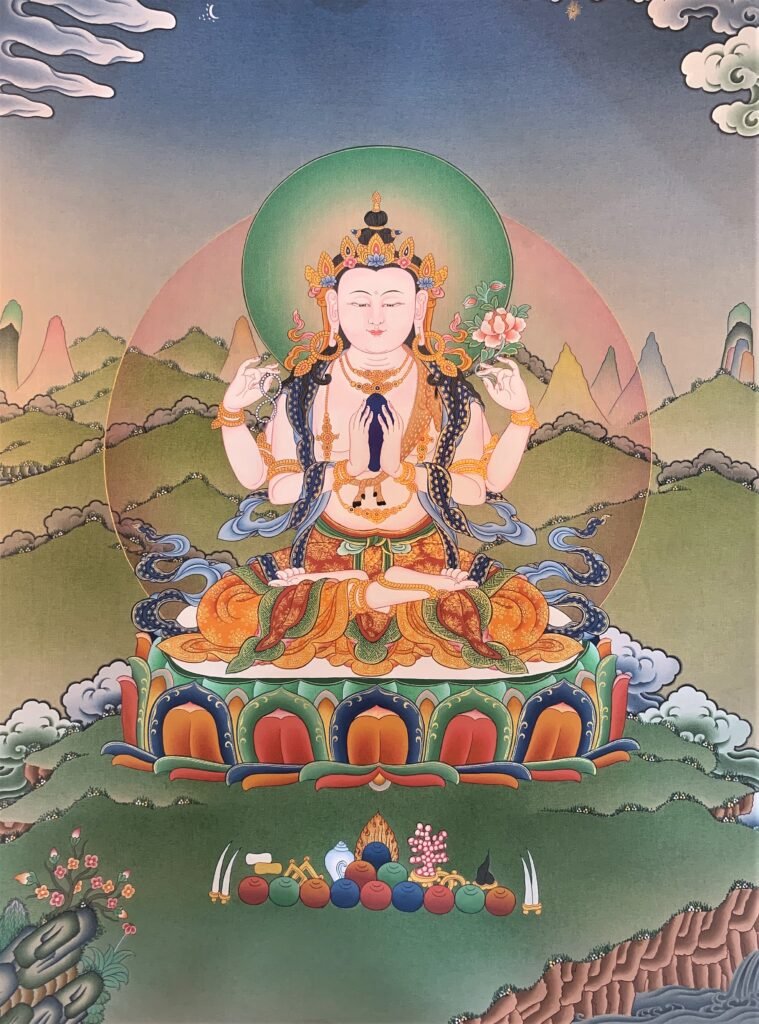
Of their union, six monkeys were born. These monkeys are thought to be the ancestors of Tibetan people, and they were allowed to grow in the forest. 3 years later, the monkey discovered that his 6 children had become 500 and that the forest was no longer enough to feed them all. They pleaded with their father to help them find food – not knowing what to do, the monkey once again turned to Avalokiteśvara for guidance. Avalokiteśvara visited the top of mount Meru (thought to be today’s mount Kailash), and gathered barley, though some think that Avalokiteśvara extracted the grains from his own body.
Avalokiteśvara offered the grains to the monkey who learned how to sow, grow and harvest the seeds enough to feed his large family. The monkey children fed themselves with the harvest provided by their father, and gradually began to lose their hair and tails.
Shortly after that, they learned how to manipulate bone and stone as tools, enabling them to make clothes, build houses, and slowly become more human-like.
Together, they formed a civilization from which the people of Tibet descended.
An alternative version of this myth suggests that Avalokiteśvara himself took compassion on the Earth after seeing that it was full of demons, incarnating himself as a monkey and creating a union with a Rakshasi to produce the first six monkeys who would create mankind.
Sources:
